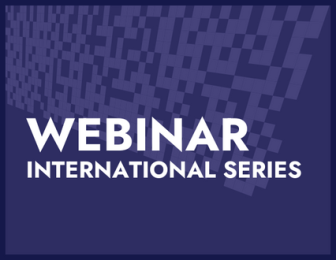Linking Digital Collections Globally
International Webinar
This Towards a National Collection (TaNC) webinar focuses on digitalization projects in the Pacific and Finland, exploring how cultural heritage data and digital collection contents could be shared globally.
- Tim Kong, Te Puna Mātauranga o Aotearoa | National Library of New Zealand: Reflections on making the digitised heritage of the Pacific visible and accessible for those in and of the Pacific
- Eero Hyvönen, Aalto University & University of Helsinki, Creating and using a national linked open data infrastructure for cultural heritage applications and Digital Humanities Research: Lessons learned
This webinar begins with a talk by Tim Kong, focusing on the design, development and functionality of the site digitalpasifik.org, exploring how Western institutions could make their records accessible to the people of the Pacific. Eero Hyvönen talks about the development of a cross-domain national ontology and Linked (Open) Data (LOD) infrastructure in Finland, share lessons learned during this work and introduce the so-called Sampo model that evolved from it.
Full abstract
Tim Kong: Reflections on making the digitised heritage of the Pacific visible and accessible for those in and of the Pacific
Defining what is "digitized" and what is "cultural heritage" is often done from the institutional norms of Western based galleries, libraries, archives and museums. These institutions do valuable work, but value and enable access in the default mediums of the West. Pacific based communities and institutions are not often able to replicate these models.
This talk shares the thinking behind the design, development and functionality of the site digitalpasifik.org. We invited participants to consider how records of their institution could be shared in the Pacific, and how to make these records accessible to the people of the Pacific.
Eero Hyvönen: Creating and using a national linked open data infrastructure for cultural heritage applications and Digital Humanities Research: Lessons learned
Cultural heritage (CH) contents are typically strongly interlinked, but published in heterogeneous, distributed local data silos, making it difficult to utilize the data on a global level. Furthermore, the content is usually available only for humans to read, and not as data for Digital Humanities (DH) analyses and application development. To address these issues, Linked Data and Semantic Web technologies can be employed.
This talk presents a model and lessons learned for creating a cross-domain national ontology and Linked (Open) Data (LOD) infrastructure in Finland [1]. The idea is to extend the global, domain agnostic ‘layer cake model’ underlying the Semantic Web with domain specific and local features needed in applications. To test and demonstrate the infrastructure, a series of over twenty LOD services and CH portals in use have been created in 2002-2023, including MuseumFinland (2004), CultureSampo (2009), BookSampo (2011), WarSampo (2015), Norssit Alumni (2017), U.S. Congress Prosopographer (2018), NameSampo (2019), BiographySampo (2019), WarVictimSampo 1914--1922 (2019), Mapping Manuscript Migrations (2020), AcademySampo (2021), FindSampo (2021), WarMemoirSampo (2021), ParliamentSampo (2023), LawSampo (2023), and OperaSampo (2023). The lessons learned during this work have gradually evolved into the so-called Sampo model applicable to a wide range of application domains in CH [2]. The Sampo portals have attracted up to millions of users on the Semantic Web, suggesting feasibility of the proposed model. This work shows a shift of focus in research on CH semantic portals from data aggregation and exploration systems (1. generation systems) to systems supporting DH research (2. generation systems) with data analytic tools, and finally to automatic knowledge discovery and Artificial Intelligence (3. generation systems) [3].
[1] Eero Hyvönen: How to Create a National Cross-domain Ontology and Linked Data Infrastructure and Use It on the Semantic Web. Semantic Web - Interoperability, Usability, Applicability, 2024, in press. bib pdf
[2] Eero Hyvönen: Digital Humanities on the Semantic Web: Sampo Model and Portal Series. Semantic Web – Interoperability, Usability, Applicability, vol. 14, no. 4, pp. 729-744, 2023. bib pdf link
[3] Eero Hyvönen: Using the Semantic Web in Digital Humanities: Shift from Data Publishing to Data-analysis and Serendipitous Knowledge Discovery. Semantic Web - Interoperability, Usability, Applicability, vol. 11, no. 1, pp. 187-193, 2020. bib pdf link

